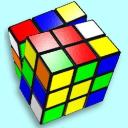Yahoo Clever wird am 4. Mai 2021 (Eastern Time, Zeitzone US-Ostküste) eingestellt. Ab dem 20. April 2021 (Eastern Time) ist die Website von Yahoo Clever nur noch im reinen Lesemodus verfügbar. Andere Yahoo Produkte oder Dienste oder Ihr Yahoo Account sind von diesen Änderungen nicht betroffen. Auf dieser Hilfeseite finden Sie weitere Informationen zur Einstellung von Yahoo Clever und dazu, wie Sie Ihre Daten herunterladen.
Math puzzle: what is the probability of both candles on same piece of cake?
Saw this problem in a magazine, and got 1/8, but by messy calculations. Is there an elegant solution?
Two sisters have a rectangular birthday cake. One sister puts two candles completely at random somewhere on top of the cake (the candles can be considered points). The other sister makes a cut at random, along the length of the cake (that is, the regular way people cut, straight up and down, and parallel to the edge of the cake). What is the probability that both candles are on the same piece of cake?
Bonus: what is the probability if the cut does not have to be parallel to the edge?
Wait a minute, now I get 1/3. I could still have made a mistake.
I don't remember the magazine defining what it meant by "placed at random" or "random cut". My assumption was that first, an x coordinate was picked randomly, then, a y coordinate, for each candle.
5 Antworten
- PuzzlingLv 7vor 1 JahrBeste Antwort
I can easily answer the main question, but I'll have to think about the bonus question.
Imagine the rectangle is a portion of the x-y plane. And let's focus just on the x-coordinates.
The first candle is at x₁
The second candle is at x₂
The slice is at xₒ
Since there are infinitely many real numbers between two points, I'm going to just say that the possibility of any of these coinciding is essentially zero. I'm not even sure what it would mean if the slice was through a candle anyway.
There are 3 equal cases:
xₒ is to the left of x₁ and x₂
xₒ is between x₁ and x₂
xₒ is to the right of x₁ and x₂
If the cut is to the left or right, the candles will be on the same piece. If the cut is between, the candles will be on different pieces.
So the probability of them being on the same piece is 2/3. The probability they are on different pieces is 1/3.
You asked about the probability of them being on the same piece.
Answer:
2/3
I'll have to think more about whether the bonus question changes the result or not. I'm not sure how you define a "random" cut. You could pick a random point and a random angle. Or you could pick two points and cut through them. Or you could pick a point on the top edge and bottom edge and connect them. Or... what is your concept of how the random cut is chosen?
- DixonLv 7vor 1 Jahr
Following on from Puzzling's answer, I am just looking at the bonus. My idea is that we always define the cut chosen direction as parallel to the y axis and orientate the cake accordingly. In which case it seems that we can always apply the same logic as for the parallel case. I'm not completely convinced by this.
- Demiurge42Lv 7vor 1 Jahr
Let the length of the cake be one unit and x be the distance of the cut from the left side of the cake. The probability that a candle is to the left of the cut is x. The probability that it is to the right of the cut is (1-x).
The probability that both candles are on the same side of the cut is x^2+(1-x)^2 = 1 -2x + 2x^2.
Integrating this from 0 to 1 gives you 2/3 which is the answer.
https://www.wolframalpha.com/input/?i=Integral+fro...
For the bonus, it will depend on how you randomly pick your cut.
Examples of ways to pick your cut:
1. Pick a random point on the cake and a random angle to make your cut.
or
2. Pick two random points on the cake and make the cut through a line containing both points.
These two different ways of choosing where to cut (or some other way) may give you different answers.
- ?Lv 7vor 1 Jahr
Probability that a candle is on a piece is proportional to the area of the piece.
Assume the 2 pieces (A and B) have equal areas.
Probability that candle 1 was placed on piece A = ½
Probability that candle 2 was placed on piece A = ½
Probability that candle 1 AND candle 2 were placed on piece A = ½ x ½ = ¼
Similarly, probability that both candles are on piece B = ¼
The probability of both candles on the same piece (A OR B) = ¼ + ¼ = ½
_________________________
For information:
Probability that candle 1 was placed on piece A AND candle 2 was placed on piece B = ½ x ½ = 1/4
Probability that candle 1 was placed on piece B AND candle 2 was placed on piece A = ½ x ½ = ¼
The probability of one candle on each piece (one candle on A OR one candle on B) = ¼ + ¼ = ½
So the numbers balance.
__________________________
This always true if the areas of the pieces (A and B) are equal. The direction of the cut (or even if it’s not straight) makes no difference.
- Wie finden Sie die Antworten? Melden Sie sich an, um über die Antwort abzustimmen.
- Michael ELv 7vor 1 Jahr
The parallel case:
Alternate statement of the problem. "A cake is cut. Two candles are placed on the cake. What is the probablility that both are on the same piece"
(For ease of calculation the cake is 1 unit long)
Let the cake be cut at x.
probability that a random candle is put on the left piece = x
probability that a random candle is put on the right piece = 1-x
probability that first candle L, second candle R = x(1-x)
probability first L second L = x^2
probatility first R second L = x(1-x)
probability first R second R = (1-x)^2
probability both on same piece = LL + RR = x^2 + (1-x)^2 = 1 - 2*x + 2*x^2
Integral from 0 to 1 of (1-2*x+2*x^2) = 2/3
BUT WAIT: The formulas for probability that a candle is on one piece or the other was based on how far the candle was from the end. Instead of distance from the end, lets compare the area of the right and left pieces to get that calculation
Probability of random candle is on the left piece = x^2 (total area of cake = b (breadth of cake), area to left of cut is x^2 * b
Probability of random candle is on right piece = (1-x)^2
Which changes the result.
It is known that two-dimensional random probabilities do not always have definite answers. This is an example of that kind of randomness problem.
(Similar problem with no solution, "what is the probability that a random cord of a circle is longer than the radius?")
There is no answer the the question.





